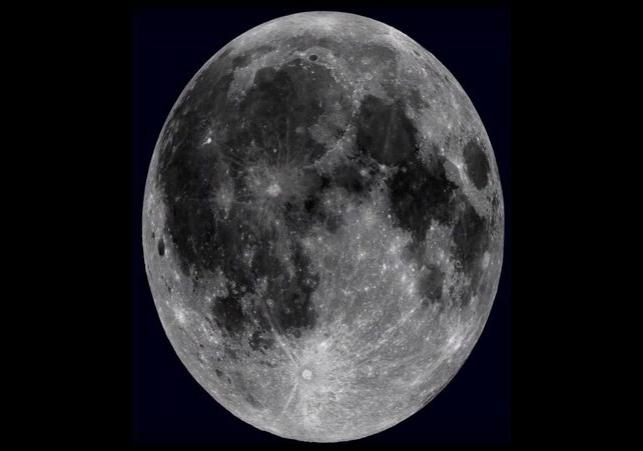

After Sun, China builds ‘artificial Moon’ The artificial surface of the mini-moon is built of pebbles and dust and is roughly two feet in diameter.
China’s space programme has been rapidly expanding, with 2021 set to be one of Beijing’s most successful years in the twenty-first century. The country has now constructed an artificial moon facility that will allow scientists to test new technology and future missions by simulating lunar conditions and the environment.
The facility, which is located in the eastern city of Xuzhou in Jiangsu province, has been dubbed the “first of its type in the world” and will make gravity “disappear.” The facility can simulate low gravity situations for as long as needed, reducing China’s reliance on zero-gravity flights for astronaut training and environments in which to test new rovers and technologies.
“While low gravity can be obtained in an aircraft or a drop tower, it is only temporary,” Li Ruilin of the China University of Mining and Technology, who is directing the development, told the South China Morning Post. In the simulator, Li stated that the impact can “last as long as you wish.”
The artificial surface of the mini-moon is made of pebbles and dust that are as light as those on the moon, and it is roughly two feet in diameter. It’s worth noting that gravity on the Moon isn’t zero; due to the magnetic field, it’s one-sixth as strong as gravity on Earth.
Some trials, like an impact test, take only a few seconds, while others, like creep testing, can take many days,” Li explained.
The facility’s development was inspired by Russianborn physicist Andre Geim’s work using a magnet to lift a frog. For this innovative experiment, the physicists were later awarded the Nobel Prize. “Magnetic levitation is not the same as antigravity,” the physicists explained to SCMP.
“However, there are a variety of situations where mimicking microgravity by magnetic fields could be invaluable to expect the unexpected in space research.” The new facility will play a critical role in China’s lunar exploration programmed, which will involve the construction of a research station on the Moon and lunar exploration through future Chang’e-6, Chang’e-7, and Chang’e-8 missions. Chang’e-7 will be the first spacecraft to reach the moon’s South Pole, followed by Chang’e-6, which will return samples from the surface. Beijing already has plans to place men on the moon’s surface by 2030 as it continues to build its Low Earth Orbit space station.
The moon simulator, according to Li, may also be used to see if new technologies like 3D printing could be employed to build structures on the lunar surface. China has already constructed a “artificial sun” that mimics the natural nuclear fusion process in the sun and stars to generate nearly endless clean energy.